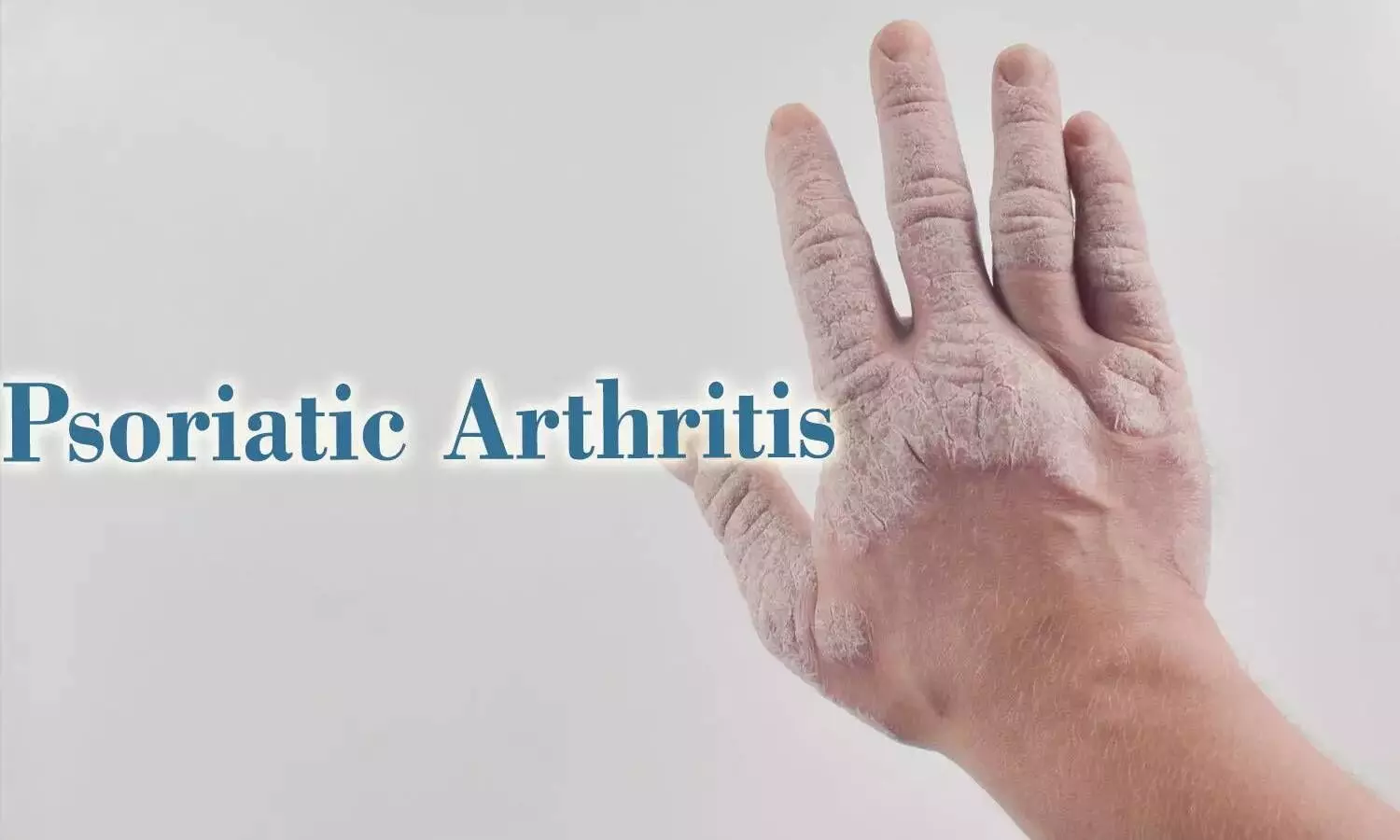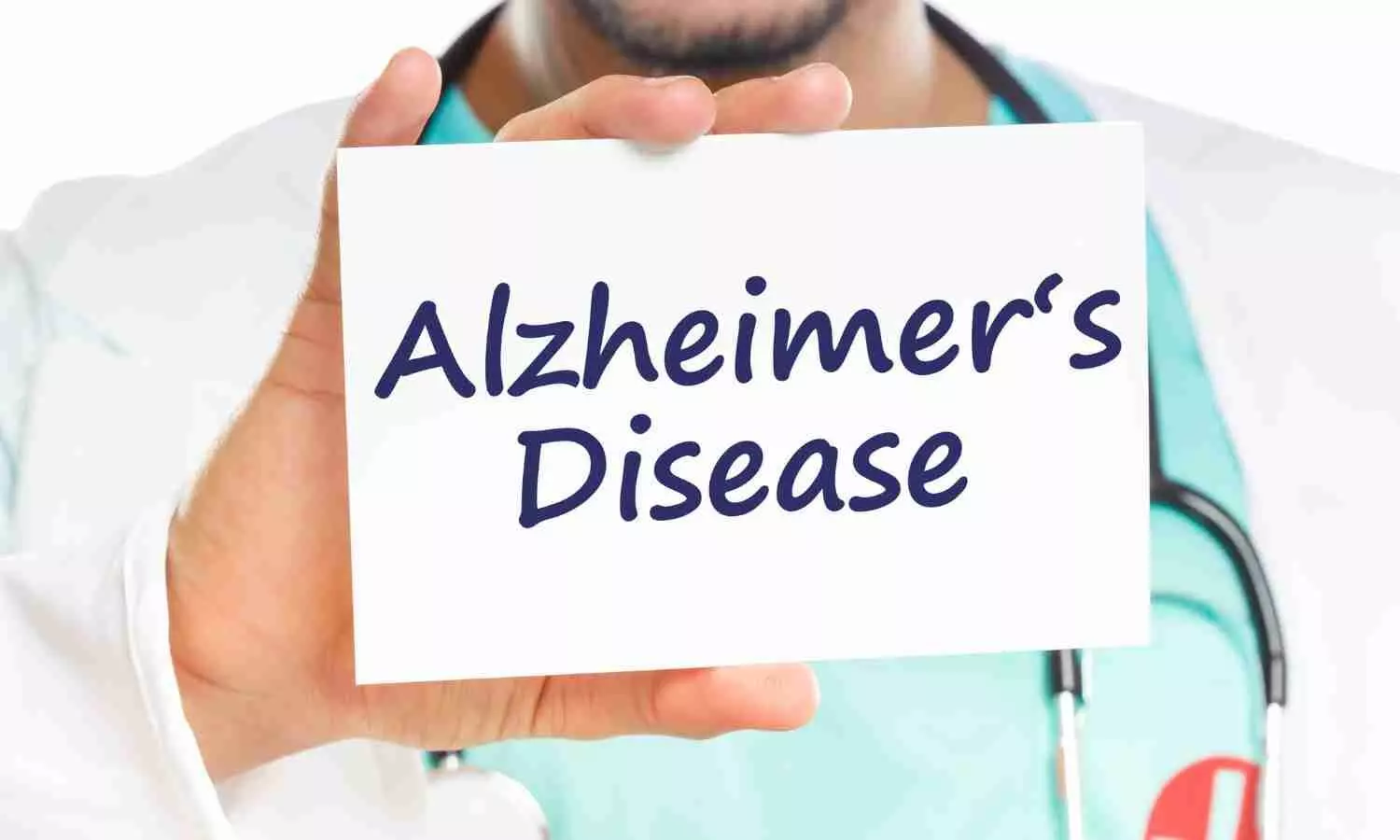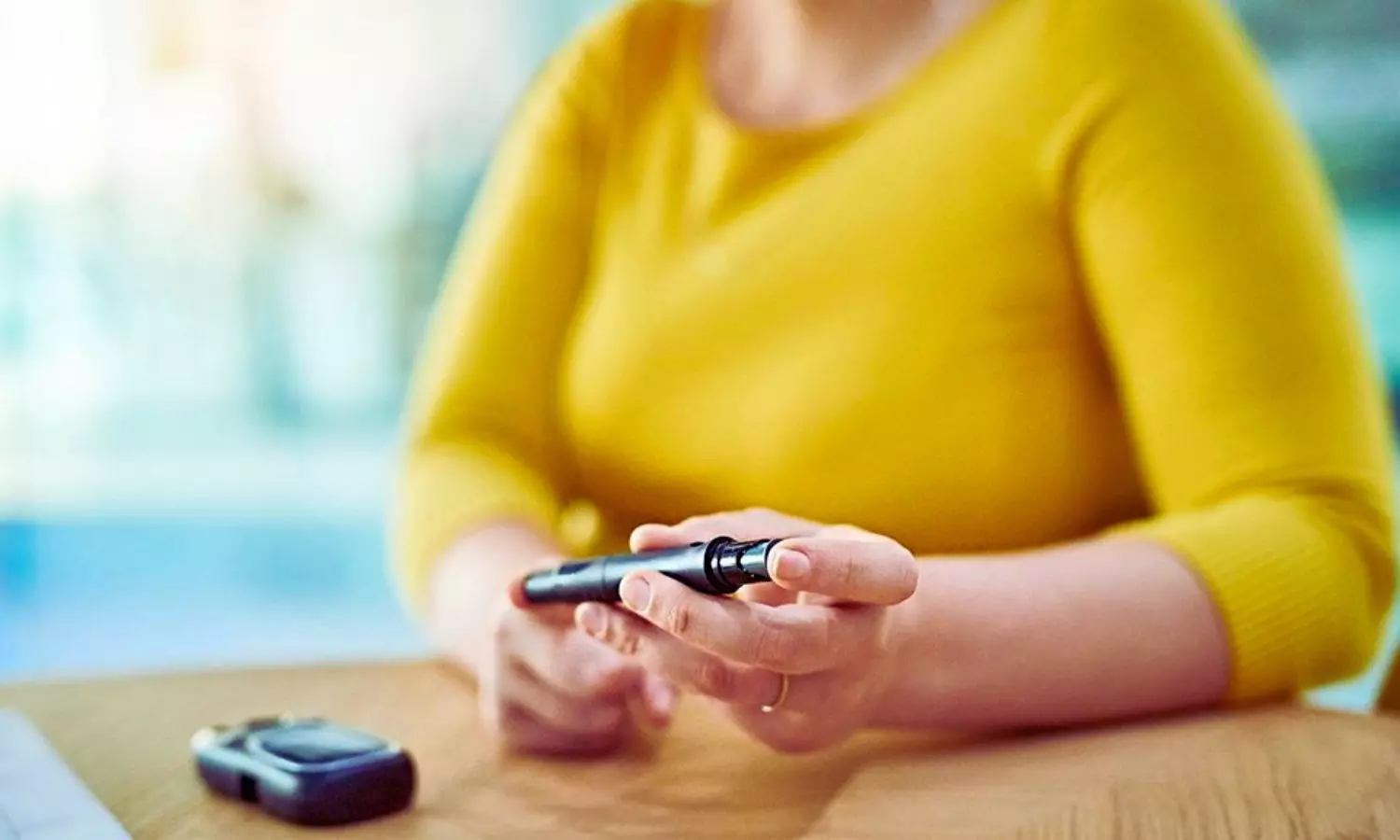Novel PET tracer detects synaptic changes in spinal cord and brain after spinal cord injury
Powered by WPeMatico
Powered by WPeMatico
Powered by WPeMatico

China: A new study has revealed that AOPT-LTL therapy significantly improves melasma by reducing melanogenesis, inflammation, angiogenesis, mast cell infiltration, and collagen degeneration, likely via inhibition of the SCF/c-KIT signaling pathway.
Powered by WPeMatico

Sweden: A new meta-analysis published in Clinical Rheumatology highlights that individuals with psoriatic arthritis (PsA) face a significantly greater burden of metabolic syndrome (MetS) compared with the general population and patients with other inflammatory arthropathies such as rheumatoid arthritis (RA) and ankylosing spondylitis (AS).
Powered by WPeMatico

Children and young adults who spend excessive hours glued to screens and electronic devices may have higher risks for cardiometabolic diseases, such as high blood pressure, high cholesterol and insulin resistance, according to new research published today in the Journal of the American Heart Association, an open-access, peer-reviewed journal of the American Heart Association.
A 2023 scientific statement from the American Heart Association noted that “cardiometabolic risk is accruing at younger and younger ages,” and only 29% of American youth, ages 2 to 19 years, had favorable cardiometabolic health based on 2013-2018 data from the National Health and Nutrition Examination Survey.
This analysis of more than 1,000 participants in two studies in Denmark found that increased recreational screen time was significantly associated with higher cardiovascular risks and cardiometabolic risks among children and adolescents.
“Limiting discretionary screen time in childhood and adolescence may protect long-term heart and metabolic health,” said study lead author David Horner, M.D., PhD., a researcher at the Copenhagen Prospective Studies on Asthma in Childhood (COPSAC) at the University of Copenhagen in Denmark. “Our study provides evidence that this connection starts early and highlights the importance of having balanced daily routines.”
Using data from a group of 10-year-olds studied in 2010 and a group of 18-year-olds in 2000 that were part of the Copenhagen Prospective Studies on Asthma in Childhood cohorts, researchers examined the relationship between screen time and cardiometabolic risk factors. Screen time included time spent watching TV, movies, gaming or using phones, tablets or computers for leisure.
Researchers developed a composite score based on a cluster of metabolic syndrome components — waist size, blood pressure, high-density lipoprotein or HDL “good” cholesterol, triglycerides and blood sugar levels – and adjusted for sex and age. The cardiometabolic score reflected a participant’s overall risk relative to the study group average (measured in standard deviations): 0 means average risk, and 1 means one standard deviation above average.
The analysis found that each extra hour of screen time increased the cardiometabolic score by about 0.08 standard deviations in the 10-year-olds and 0.13 standard deviations in the 18-year-olds. “This means a child with three extra hours of screen time a day would have roughly a quarter to half a standard-deviation higher risk than their peers,” Horner said.
“It’s a small change per hour, but when screen time accumulates to three, five or even six hours a day, as we saw in many adolescents, that adds up,” he said. “Multiply that across a whole population of children, and you’re looking at a meaningful shift in early cardiometabolic risk that could carry into adulthood.”
The analysis also found that both sleep duration and sleep timing affected the relationship between screen time and cardiometabolic risk. Both shorter sleep duration and going to sleep later intensified the relationship between screen time and cardiometabolic risk. Children and adolescents who had less sleep showed significantly higher risk associated with the same amount of screen time.
“In childhood, sleep duration not only moderated this relationship but also partially explained it: about 12% of the association between screen time and cardiometabolic risk was mediated through shorter sleep duration,” Horner said. “These findings suggest that insufficient sleep may not only magnify the impact of screen time but could be a key pathway linking screen habits to early metabolic changes.”
In addition, a machine learning analysis identified a unique metabolic signature in the blood that appeared to be associated with screen time.
“We were able to detect a set of blood-metabolite changes, a ‘screen-time fingerprint,’ validating the potential biological impact of the screen time behavior,” he said. “Using the same metabolomics data, we also assessed whether screen time was linked to predicted cardiovascular risk in adulthood, finding a positive trend in childhood and a significant association in adolescence. This suggests that screen-related metabolic changes may carry early signals of long-term heart health risk.
“Recognizing and discussing screen habits during pediatric appointments could become part of broader lifestyle counseling, much like diet or physical activity,” he said. “These results also open the door to using metabolomic signatures as early objective markers of lifestyle risk.”
Amanda Marma Perak, M.D., M.S.CI., FAHA, chair of the American Heart Association’s Young Hearts Cardiovascular Disease Prevention Committee, who was not involved in this research, said focusing on sleep is a great starting point to change screen time patterns.
“If cutting back on screen time feels difficult, start by moving screentime earlier and focusing on getting into bed earlier and for longer,” said Perak, an assistant professor of pediatrics and preventive medicine at Northwestern University Feinberg School of Medicine in Chicago.
Adults can also set an example, she said. “All of us use screens, so it’s important to guide kids, teens and young adults to healthy screen use in a way that grows with them. As a parent, you can model healthy screen use – when to put it away, how to use it, how to avoid multitasking. And as kids get a little older, be more explicit, narrating why you put away your devices during dinner or other times together.
“Make sure they know how to entertain and soothe themselves without a screen and can handle being bored! Boredom breeds brilliance and creativity, so don’t be bothered when your kids complain they’re bored. Loneliness and discomfort will happen throughout life, so those are opportunities to support and mentor your kids in healthy ways to respond that don’t involve scrolling.”
As an observational study using prospectively collected data, the findings reflect associations rather than proving cause and effect. Moreover, parents of the 10-year-olds and the 18-year-olds reported screen time through questionnaires, which may not accurately reflect the actual time youth spent on screens.
Horner suggested that future research could explore whether limiting screen use in the hours before sleep, when light from screen exposure may disrupt circadian rhythms and disrupt sleep onset, may be an avenue to help reduce cardiometabolic risk.
Study details, background and design:
Reference:
David Horner, Marie Jahn, Screen Time Is Associated With Cardiometabolic and Cardiovascular Disease Risk in Childhood and Adolescence, Journal of the American Heart Association, DOI: 10.1161/JAHA.125.041486
Powered by WPeMatico

Exposure to high concentrations of air pollution may worsen Alzheimer’s disease (AD) by accelerating the buildup of toxic proteins in the brain and speeding up cognitive decline. For the first time, post-mortem tissue from people with AD revealed that those who lived in areas with higher concentrations of fine particulate matter in the air even just one year had more severe accumulation of amyloid plaques and tau tangles-hallmarks of Alzheimer’s pathology-compared to those with less exposure. These individuals also experienced faster cognitive and functional decline, including memory loss, impaired judgment, and difficulty with personal care, according to research published today in JAMA Neurology from the Perelman School of Medicine at the University of Pennsylvania.
“This study shows that air pollution doesn’t just increase the risk of dementia-it actually makes Alzheimer’s disease worse,” said Edward Lee, MD, PhD, co-director of Penn’s Institute on Aging. “As researchers continue to search for new treatments, it’s important to uncover all of the factors that contribute to the disease, including the influence of the environment in which they live.”
Air pollution is made up of fine particulate matter, or the tiny, inhalable particles, ranging from 10 micrometers to less than 2.5 micrometers wide, about half the width of a single strand of spider web. It can come from wildfire smoke, car exhaust, construction site debris, or combustion from factories. Particulate matter 2.5 micrometers and smaller (PM2.5) is so small that when inhaled, the particles can be absorbed into the blood stream and cause health concerns. Previous research has linked air pollution containing PM2.5 with dementia, loss of cognitive function, and accelerated cognitive decline.
The researchers examined brain samples from over 600 autopsies from the Penn Medicine Brain Bank. Using data from satellites and local air quality monitors, the researchers modeled the amount of PM2.5 in the air based on where each person lived. They found that for every increase of 1 microgram per cubic meter of PM2.5, the risk for worse Alzheimer’s disease amyloid and tau buildup increased by 19 percent.
Further, when they examined the clinical records of these individuals, researchers found that those who lived in areas with high concentrations of PM2.5 with advanced pathology also had greater cognitive impairment and more rapid onset of symptoms, including memory loss, difficulty with speech, and diminished judgement, compared to people who lived in areas with lower concentrations of air pollution.
While this study focused on exposures to PM2.5 based on geographic location, researchers acknowledge that they could not account for individual-specific exposures to air pollution, such as exposure to second-hand smoke in the home, or working with potentially dangerous chemicals.
“In the United States, air pollution is at the lowest levels in decades, but even just a year living in an area with high levels of pollution can have a big impact on a person’s risk for developing Alzheimer’s disease,” said Lee. “It underscores the value of environmental justice efforts that focus on reducing air pollution to improve public health.”
Reference:
Kim B, Blam K, Elser H, et al. Ambient Air Pollution and the Severity of Alzheimer Disease Neuropathology. JAMA Neurol. Published online September 08, 2025. doi:10.1001/jamaneurol.2025.3316
Powered by WPeMatico

Apollo transcranial magnetic stimulation (TMS) therapy devices by neurocare group have received FDA clearance for treating adolescents with major depressive disorder (MDD).
Major depression affects an estimated 5 million adolescents in the U.S. each year, yet treatment options remain limited. Currently, only two oral antidepressants are FDA-approved for use in this age group, and both carry a “black box” warning-the strongest warning the FDA issues for medications-due to an increased risk of suicidal thoughts and actions. These medications have an effectiveness rate of only about 35% in achieving remission, and many patients discontinue due to side effects or lack of clinical benefit.
TMS offers a safe, non-invasive, and drug-free alternative, with no black box warning and no medication-related side effects. Clinical studies show that approximately 60% of patients achieve remission with TMS, making it a promising new treatment option for adolescents who have not found success with other treatments.
During TMS Therapy, clinicians position a magnetic coil on the patient’s head to deliver targeted stimulation to specific brain regions involved in mood regulation. neurocare’s engineering team in Germany has developed advanced technology where the magnetic field is more efficient at providing the prescribed stimulation. This advancement improves the impact of treatment, giving patients the best possible chance to benefit from their psychiatrist’s prescribed therapy.
“Our mission has always been to expand access to safe and effective treatments for those who need them most,” said Stanford Miller, Managing Director of neurocare group’s North American operations. “This clearance allows providers to offer adolescents a proven therapy without the risks and limitations of medication, giving hope to families searching for better treatment options.”
Since 2021, neurocare has installed more than 300 Apollo systems in clinics and major institutions across the U.S., helping with the treatment of complex cases of Major Depressive Disorder (MDD) in adults, as well as Obsessive Compulsive Disorder (OCD). The Apollo TMS Therapy product line is FDA-cleared for the treatment of MDD in adult patients who have not had an adequate response to oral antidepressants. It is also FDA-cleared as an adjunctive treatment for OCD in adult patients who have not responded to traditional therapies. The same advanced technology is now FDA-cleared as an adjunctive treatment for adolescents with MDD. Most private and public insurers cover TMS Therapy for adults with MDD, and an increasing number are extending coverage to adolescents.
Powered by WPeMatico

Sweden: Women living with type 1 diabetes (T1DM) face a significantly greater risk of preeclampsia during pregnancy, and this risk rises in a dose-dependent manner with worsening blood sugar control around conception, according to new research published in BJOG: An International Journal of Obstetrics & Gynaecology.
Powered by WPeMatico

China: Researchers have found in a new study that transcutaneous auricular vagus nerve stimulation (taVNS) appears to be a safe and effective therapy for reducing uterine contraction pain in women following cesarean delivery.
Powered by WPeMatico

A quicker, cheaper MRI scan was just as accurate at diagnosing prostate cancer as the current 30-40 minute scan and should be rolled out to make MRI scans more accessible to men who need one, according to clinical trial results led by UCL, UCLH and the University of Birmingham.
The PRIME trial, funded by the John Black Charitable Foundation and Prostate Cancer UK, and published in JAMA, confirms that a two-part MRI scan is just as effective at diagnosing prostate cancer, whilst cutting scan time to just 15-20 minutes and reducing the need for a doctor to be present.
The investigators say the results are likely to lead to changes in clinical practice, making MRI accessible to more men in the UK and beyond.
Prostate cancer is the most common cancer in men, with around 56,000 diagnoses and 12,000 deaths each year in the UK1. The introduction of MRI scans over the last decade, following work by UCL researchers, has been the biggest change in how prostate cancer is diagnosed for the past 30 years.
Abnormalities seen on the MRI scan allow targeted tissue biopsies to be taken that can improve cancer detection. A normal MRI result, which occurs in around a third of patients, is reassuring and allows men to avoid an unnecessary biopsy.
Despite the clear benefits of the MRI scan, in many healthcare settings around the world, men who need a scan still do not get one. For example, previous research has estimated that 35% of US prostate cancer patients received an MRI in 2022. In England and Wales, only 62% of men who needed a prostate MRI received one in 2019 (the most recent year for when data is available).
Associate Professor Veeru Kasivisvanathan, lead researcher and Chief Investigator on the trial from UCL Surgery & Interventional Science and UCLH, said: “Currently around four million MRI scans are needed each year globally to diagnose prostate cancer. This demand is set to rise rapidly with a predicted surge in prostate cancer cases over the next 20 years.
“Time, cost and staff availability are all limiting factors in how many scans can be offered, which makes the results of the PRIME trial particularly important. If we can do the scan in up to half the time, with fewer staff and at lower cost, that will make a huge difference in allowing every man who needs a scan to be able to get one in a timely fashion.”
In the study, cancer specialists from 22 hospitals in 12 countries across the world recruited 555 patients aged 59-70 to see whether a streamlined two-part ‘biparametric’ MRI could detect cancer at the same rate as a full three-part ‘multiparametric’ MRI, which is currently standard of care in the UK and includes a third stage where a dye is injected into the patient.
All patients underwent the full three-part scan. Radiologists then assessed the two-part scan without the dye, and separately assessed the three-part scan with the dye, for every patient. A prostate biopsy was done when required to confirm whether or not the diagnosis was correct.
Researchers from UCL and UCLH confirmed that the two-part scan was just as effective at diagnosing prostate cancer. In total, 29% of the patients had important prostate cancer diagnosed by the shorter two-part scan, the same percentage as the longer three-part scan.
Associate Professor Francesco Giganti, a lead radiologist on the trial from UCL Surgery & Interventional Science and UCLH, said: “The three-part multiparametric MRI scan has been a game-changer for the diagnosis of prostate cancer, sparing thousands of patients unnecessary biopsies and improving cancer detection.
“Currently we inject a dye into the patient that highlights the presence of cancer on the MRI scan, but this step requires time and the presence of a clinician, and can on rare occasion cause mild side effects.
“Being able to make accurate diagnoses without the contrast stage will reduce scan time meaning we can offer scans to more men using the same number of scanners and operators. However, it is vital that the scans are of optimal diagnostic quality and that they are interpreted by a radiologist with dedicated expertise in prostate MRI.”
As well as making the procedure more efficient in terms of time and personnel, a two-stage MRI would generate significant cost savings per scan. In the NHS currently, a three-phase MRI scan costs £273 on average3. At £145, a two-phase scan is 47% cheaper. In countries like the US where healthcare costs tend to be much higher, the savings are likely to be even greater.
Prostate Cancer UK’s TRANSFORM trial, the biggest prostate cancer screening trial for 20 years that will include MRI, is due to begin later this year. It will be jointly led by UCL researchers alongside collaborators from Imperial College London, The Institute of Cancer Research and Queen Mary University of London. The trial will find the best way to screen men for prostate cancer, achieving the evidence needed for the introduction of a national screening programme. The results of the PRIME trial are an important step towards realising this ambition.
Dr Matthew Hobbs, Director of Research at Prostate Cancer UK, said: “The results from the PRIME trial, showing that a faster, cheaper, type of prostate MRI is just as good as the current standard MRI at detecting prostate cancer, are a hugely important step in the right direction for making MRIs more efficient.
“Another trial is already happening in the UK and the results of the two trials together should provide the complete evidence package we need to change practice across the country. We encourage NICE to prepare to review their guidelines as soon as that evidence base is complete, so that we can make MRI quicker, cheaper and less onerous for men.
“Our funding for PRIME, alongside the John Black Charitable Foundation, also provided recommendations of a few simple ways for hospitals to improve scan quality. So, while we await a review by NICE, hospitals should use guidelines from UCL’s GLIMPSE trial, so that they are ready for the implementation of biparametric MRI if it’s recommended, and so that the men having MRI scans right now get the most accurate scan possible.”
Reference:
Ng AB, Asif A, Agarwal R, et al. Biparametric vs Multiparametric MRI for Prostate Cancer Diagnosis: The PRIME Diagnostic Clinical Trial. JAMA. Published online September 10, 2025. doi:10.1001/jama.2025.13722
Powered by WPeMatico
